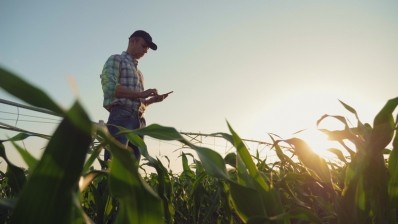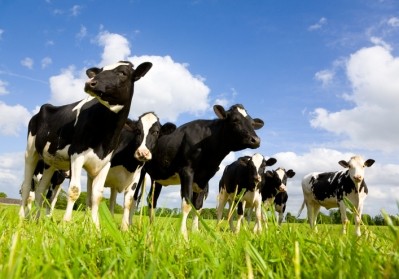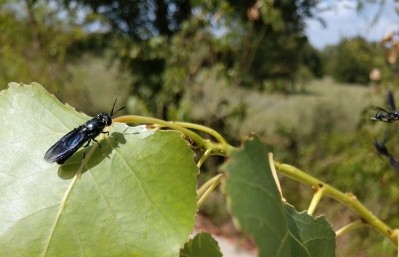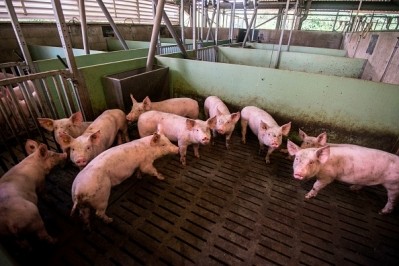Novel pig and poultry feeds: EU initiative identifies the likely contenders

Former foodstuffs, with an emphasis on bakery products as a carbohydrate input, microalgae as a source of both protein and micronutrients, and green biomass, including grass and clover, were other candidates deemed promising in terms of more sustainable EU monogastric diets.
EU-wide industry, farming and academia representatives participated in this focus group, run under the auspices of EIP-AGRI. They were charged with generating an inventory of alternative strategies and sources for pig and poultry feed, including both new and underused ones.
“In terms of algae, we have not highlighted a species per se but we have narrowed it down to microalgae, from initially assessing both micro- and macro- algae. In relation to insects, we were very specific about species,” said Lars-Henrik Heckmann, head of section, insect and protein technology, Danish Technological Institute (DTI), who is coordinating this effort.
EIP-AGRI coordinates around 30 such focus groups, digging into topics of critical interest to European agriculture. "We are trying to inspire, foster networks, and connections, [the idea is our work] will then, hopefully, lead to innovative projects and new, sustainable solutions for the pig and poultry feed sector,” said Remco Schreuder, farm practices officer, EIP-AGRI Service Point.
Circular economy
The focus group was run in the context of increased European consumer focus on sustainable and ethical food production. A starting paper for this exercise, which set the scene for the participants, noted that EU pig and poultry farmers could benefit by focusing on feed inputs that add value in terms of ethical food production and/or reducing the climate- and environmental footprint of farming.
New feedstuffs could also offer an opportunity to incorporate the circular economy principal at farm level, according to that review.
The EIP-AGRI feed initiative saw members participate in two workshops on this topic – one in June 2018 and another at the end of January this year. Some of the stakeholders involved also worked in sub-groups in between and wrote up related mini-papers. A final paper summarizing all the work is due this summer.
The feed ingredient candidates the focus group zoomed in on all have various pros and cons, depending on their development stage, their maturity, Heckmann told FeedNavigator.
The stakeholders highlighted knowledge and innovation gaps holding back the commercial development or wider take-up of the candidates.
“We split industry and academia into two groups during the workshops. Surprisingly, there was a high level of commonality in the recommendations made by the alternate groups about where future research and industry focus should lie in relation to the novel feeds,” Schreuder told us.
The focus group’s proposals may be taken up in operational groups, which are run regionally throughout Europe and funded by Rural Development Programs; these innovative projects can stimulate the use and improvement of alternative resources, added Schreuder.
In terms of production of these novel feed components, apart from former foodstuffs, there is a conspicuous need to close knowledge gaps in relation to processing, said Heckmann.
Nutrient profiling
Some of the stakeholders, he continued, recognized the lack of data on the nutritional requirements of BSF, as a research gap.
“If we want to produce a good feedstuff, we have to be able to produce good larvae. How do we do that? Of course, there are companies already doing this, but we do not have a nutritional norm for BSF as we do for poultry and pigs, and so forth. We need to know what the micronutrient, the amino acid requirements, etc., are of BSF, for example.”
Tools to provide fast and reliable identification of the nutrient value of the novel feedstuffs are also needed, according to the stakeholders.
NIR technology, which uses near infra-red light to analyze an ingredient or feed sample to predict its nutritional value, was mentioned by both groups in this context: “There was a sweet spot here where industry and academics saw both need and opportunity,” said Heckmann.
Inclusion levels
Further research to determine the optimal inclusion levels of these novel inputs in pig and poultry rations and to qualify the full gamut of nutritional effects they provide was also deemed necessary.
“In the insect production sector initially, a few years back, it was all about how much fishmeal we could replace, rather than looking at the optimal inclusion level of insect meal, [we were not assessing insect protein] on its own merits. So these were the kind of areas proposed in terms of [research gaps that needed plugging],” he added.
Information on the anti-nutritional factors of these novel feeds was also cited as lacking.
Pricing
Pricing is generically an important parameter when it comes to feed innovation.
The EIP-AGRI starting paper highlighted that feed material with moderate to high protein content would have to be priced within the level of soybean meal and fishmeal costs, in order to be competitive.
When it comes to carbohydrate-rich feed materials, that overview noted the price could be fixed around the level of different grain-based crops such as wheat, rye, barley, corn and rice. However, the price level may well be somewhat lower as in the case for certain industrial residuals and former foodstuffs.
“Feed materials that have specific characteristics such as a high level of essential micronutrients or known health benefits, e.g. boosting immune health, may be priced at somewhat higher level than even protein-rich feed material.”















